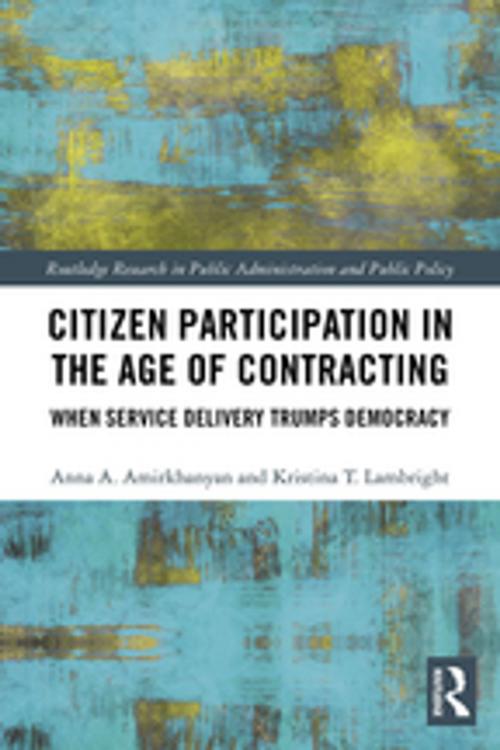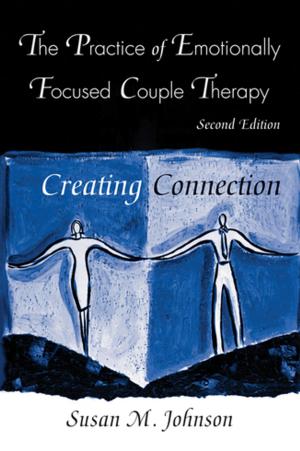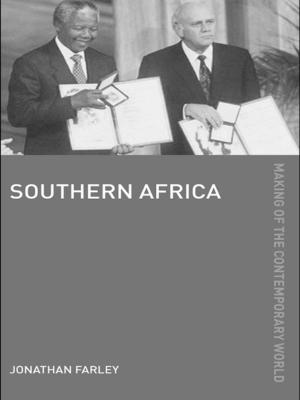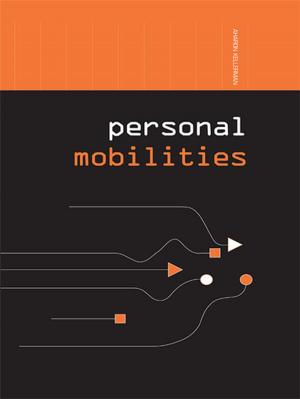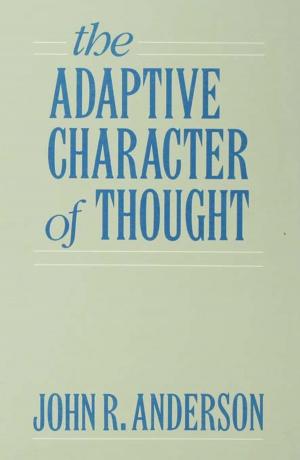Citizen Participation in the Age of Contracting
When Service Delivery Trumps Democracy
Nonfiction, Social & Cultural Studies, Political Science, Politics, Practical Politics, Social Science| Author: | Anna A. Amirkhanyan, Kristina T. Lambright | ISBN: | 9781351379267 |
| Publisher: | Taylor and Francis | Publication: | November 28, 2017 |
| Imprint: | Routledge | Language: | English |
| Author: | Anna A. Amirkhanyan, Kristina T. Lambright |
| ISBN: | 9781351379267 |
| Publisher: | Taylor and Francis |
| Publication: | November 28, 2017 |
| Imprint: | Routledge |
| Language: | English |
Citizen Participation in the Age of Contracting is based on a simple premise: in democracies, power originates with citizens. While citizen participation in government remains a central tenet of democracy, public service delivery structures are considerably more complex today than they were fifty years ago.
Today, governments contract with private organizations to deliver a wide array of services. Yet, we know very little about how citizens influence government decisions and policies in the "hollow state." Based on nearly 100 interviews with public and private managers, our findings about the state of citizen participation in contract governance are somewhat disheartening. Public and private organizations engaged citizens in a number of ways. However, most of their efforts failed to shift the power structure in communities and did not give citizens a chance to fundamentally shape local priorities and programs. Instead, elected officials and professional staff largely maintained control over significant policy and administrative decisions. Widespread, but narrow in their forms and impact, the participation practices we uncovered did not live up to the ideals of democracy and self-governance.
Citizen Participation in the Age of Contracting is suitable for those who study public administration, as well as in other closely related fields such as nonprofit management and organizational behavior.
Citizen Participation in the Age of Contracting is based on a simple premise: in democracies, power originates with citizens. While citizen participation in government remains a central tenet of democracy, public service delivery structures are considerably more complex today than they were fifty years ago.
Today, governments contract with private organizations to deliver a wide array of services. Yet, we know very little about how citizens influence government decisions and policies in the "hollow state." Based on nearly 100 interviews with public and private managers, our findings about the state of citizen participation in contract governance are somewhat disheartening. Public and private organizations engaged citizens in a number of ways. However, most of their efforts failed to shift the power structure in communities and did not give citizens a chance to fundamentally shape local priorities and programs. Instead, elected officials and professional staff largely maintained control over significant policy and administrative decisions. Widespread, but narrow in their forms and impact, the participation practices we uncovered did not live up to the ideals of democracy and self-governance.
Citizen Participation in the Age of Contracting is suitable for those who study public administration, as well as in other closely related fields such as nonprofit management and organizational behavior.
